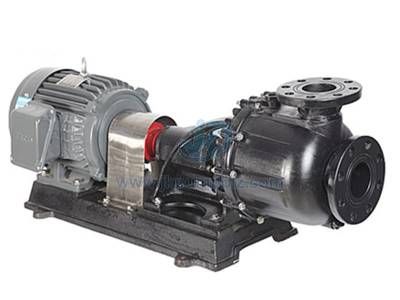The Reason Why The Self-Priming Pump Does Not Absorb Water
The Self Priming Pump does not absorb water is one of its common failures, and it is also a problem that the pump often encounters in daily use. So when it encounters pumping water, what is the reason?
The resistance loss in the water inlet and outlet pipes is too large
When the pipe is too long, there are too many bends, or some details such as the diameter of the water pump in and out of the pipe, it will cause excessive resistance loss of the water flow in the pipe.
The pump speed is too low
(1) Power machine maintenance is not recorded.
(2) Improper installation.
(3) Mechanical failure of the pump itself.
(4) The transmission belt is worn.
(5) Human factors.
Too much suction
The degree of vacuum that can be established at the suction port of the Self Priming Water Pump is limited. The maximum suction stroke of each centrifugal pump is generally between 3 and 8.5 meters. When installing the pump, it must not be convenient and simple.

Self Priming Water Pump
There is air in the inlet pipe and pump body
(1) There are cracks in the elbow of the inlet pipe, and there is a tiny gap between the inlet pipe and the water pump, which may cause air to enter the inlet pipe.
(2) The packing of the water pump has been worn out due to long-term use or the packing is too loose, causing a large amount of water to be ejected from the gap between the packing and the shaft sleeve of the pump. As a result, external air enters the interior of the pump from these gaps. Affected water lifting.
(3) The horizontal section of the inlet pipe that is in contact with the water pump should have a descending gradient of more than 0.5% against the flow direction. The end connected to the inlet of the water pump is the highest, not completely horizontal. If it is tilted upwards, air will remain in the water inlet pipe, which reduces the vacuum in the water pipe and the water pump and affects water absorption.
(4) Due to long-term potential underwater, the pipe wall has corroded holes, and the water surface drops continuously after the pump works. When these holes are exposed to the water surface, air enters the inlet pipe from the holes.
(5) Some users have not filled enough water before the pump is started; sometimes it seems that the filled water has overflowed from the vent, but the pump shaft has not been rotated and the air is completely discharged, resulting in a little air remaining in the inlet pipe or pump body .
Influence of other factors
(1) Leakage in the outlet pipe of the Dry Self-Priming Pump will also affect the water lift.
(2) Failure or blockage of the gate valve or check valve will cause the flow to decrease or even fail to pump water.
(3) The filter screen of the bottom valve is blocked; or the bottom valve is blocked in the sludge layer in the potential water.
(4) The impeller is severely worn. The impeller blades are worn out after long-term use, which affects the performance of the pump.
(5) The bottom valve cannot be opened. It is usually because the pump is left for too long, the gasket of the bottom valve is stuck, and the bottom valve without gasket may rust.









